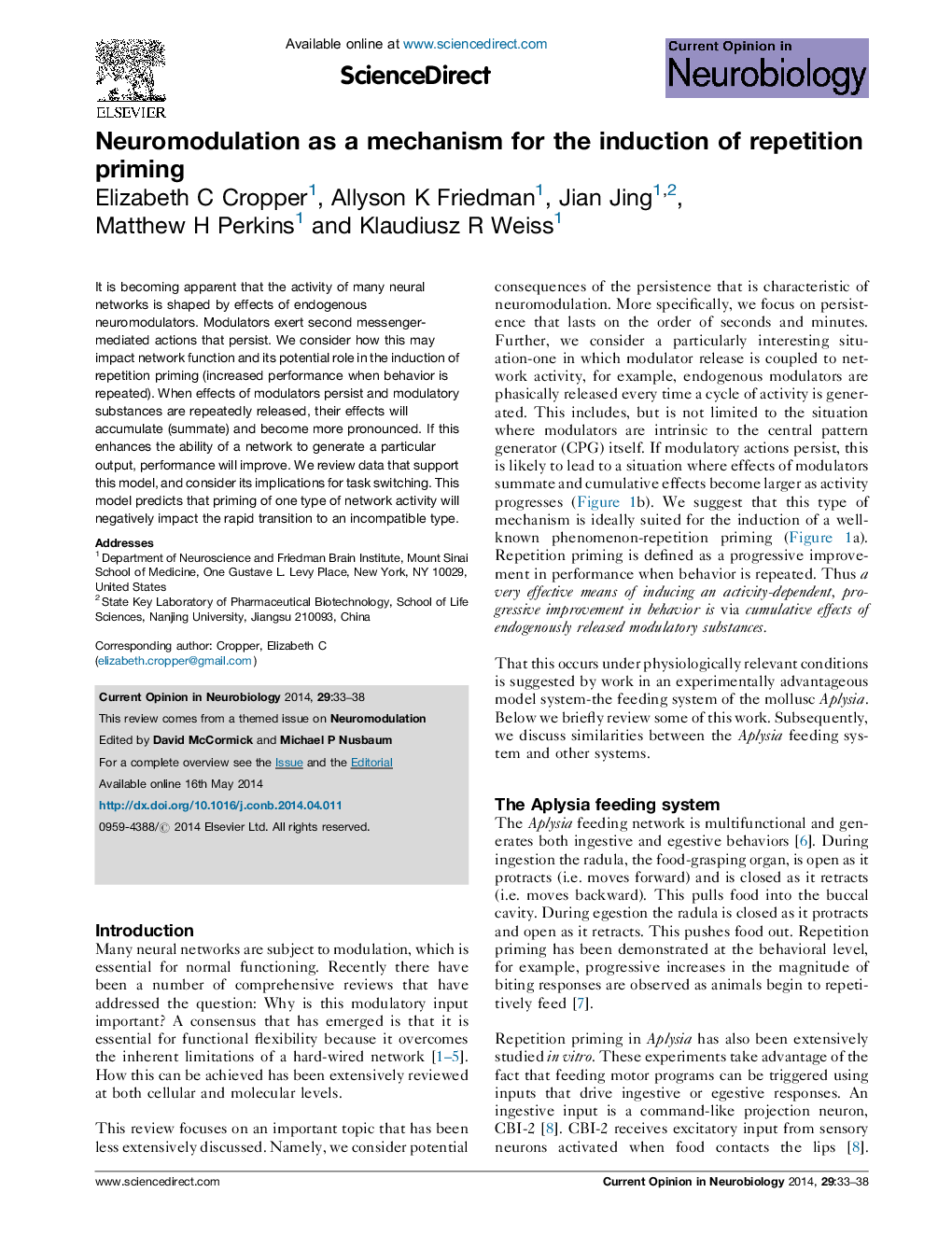| Article ID | Journal | Published Year | Pages | File Type |
|---|---|---|---|---|
| 4334192 | Current Opinion in Neurobiology | 2014 | 6 Pages |
•Many networks are persistently modulated by endogenous input.•Modulator release is often ‘phasic’ and closely tied to network activity.•Effects of modulators can become cumulative with repeated network activity.•Cumulative effects of neuromodulation can lead to repetition priming.
It is becoming apparent that the activity of many neural networks is shaped by effects of endogenous neuromodulators. Modulators exert second messenger-mediated actions that persist. We consider how this may impact network function and its potential role in the induction of repetition priming (increased performance when behavior is repeated). When effects of modulators persist and modulatory substances are repeatedly released, their effects will accumulate (summate) and become more pronounced. If this enhances the ability of a network to generate a particular output, performance will improve. We review data that support this model, and consider its implications for task switching. This model predicts that priming of one type of network activity will negatively impact the rapid transition to an incompatible type.
